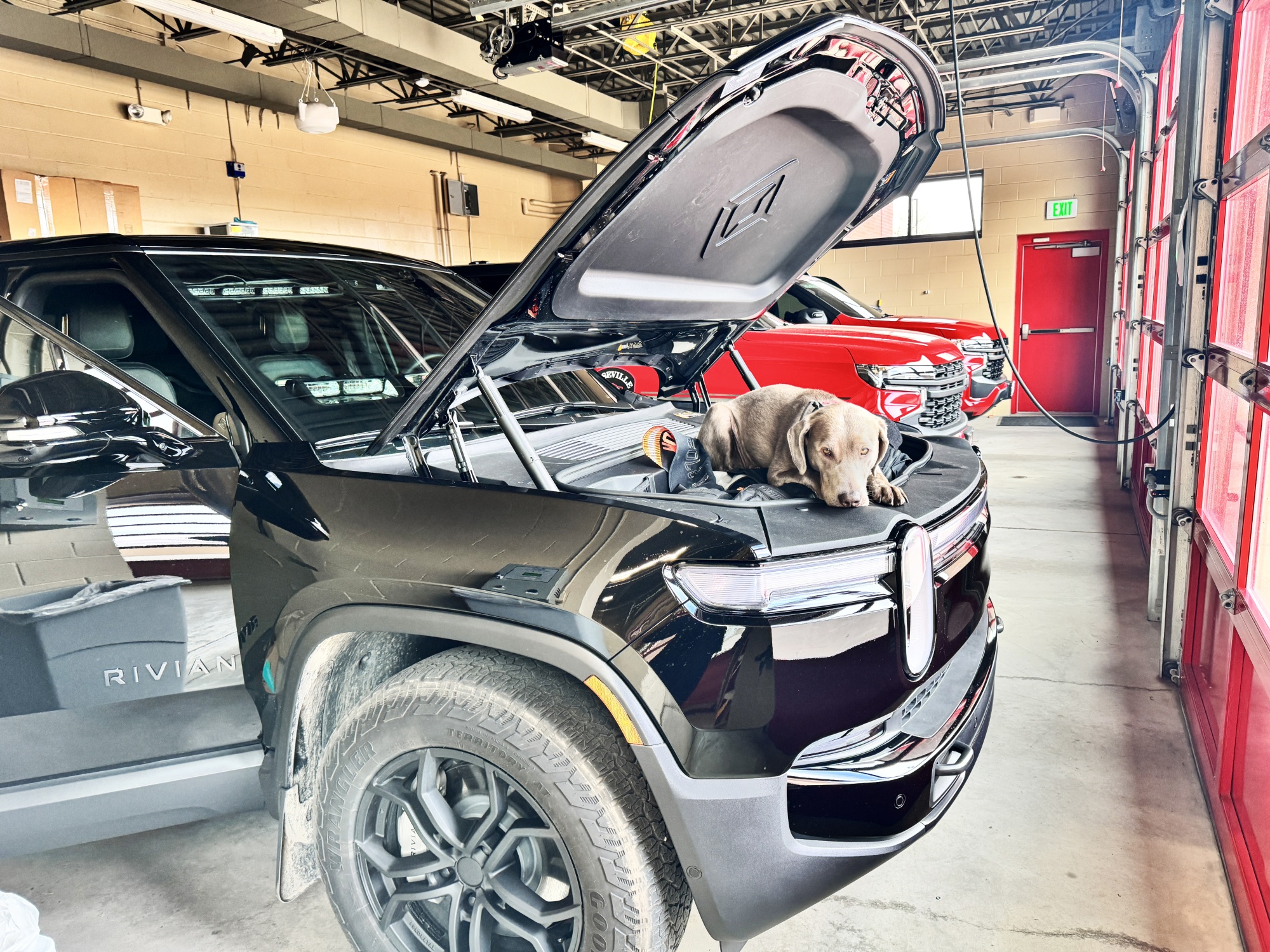| By Kyle Stock The Roseville, Minnesota, fire department has lots of trucks, but its latest had to be electric. That’s the one that carries Ashes, its therapy dog, to and from fires, funerals and any other place where public safety officers need a morale boost. Assistant Chief Niel Sjostrom says Ashes gets cozy in pretty much any vehicle, but the department’s new Rivian Automotive Inc. SUV has programmable climate control, so the pup stays safe when the truck is parked in the heat of summer or cold of winter. “The ‘Pet Comfort’ (feature) was a huge part of our decision,” Sjostrom says from his station on the outskirts of Minneapolis. “Now, I don’t leave here without bringing her with me.” Almost all electric vehicles now have some form of climate control that can be programmed to run when the machine is parked and driverless, another feature electric models can offer that internal combustion ones can’t, like a front trunk or fueling at home. The temperature setting, which carmakers have been marketing for years, is now drawing a wide and specific demographic: the devoted dog owner. Lucid Group Inc. calls its feature “Creature Comfort mode,” which “has without a doubt been a great sales tool,” says spokesman Justin Berkowitz.  Ashes resting in the Rivian frunk. Source: Neil Sjostrom Enthusiasm for electric vehicles has been fading somewhat around the world. The pace of EV sales, while still brisk, has slowed down in recent years as governments ratcheted back incentives for electric models, which remain more expensive than gas-powered cars. In this environment, keeping the family pet comfortable is one overlooked selling point that is convincing some people to go electric. Adding features for dog owners is a sound business strategy. There have never been more dogs in the US, and households with them tend to earn more money than average. While a wide swath of EV brands let drivers keep climate control active for 30 minutes or so while the car is off, companies that exclusively make electric vehicles — Lucid Group, Polestar Automotive Holding, Rivian and Tesla Inc. — have explicitly marketed the feature to dog lovers.  Laura Westfall chose a Rivian SUV for the climate control feature for her dog Huckleberry. Source: Laura Westfall Experts have long warned against leaving pets in an unattended car, but the carmakers promise their systems have safeguards built in. In these cars and trucks, a driver sets the climate control to run either before getting out of the car or remotely via an app. The vehicles will display a message on the navigation screen that climate control is engaged, lest a passerby think the animal is in danger. The setting also typically blocks over-the-air software updates to avoid the car shutting down while an animal is inside. If power is running low or the climate control is struggling to overcome extreme temperatures, the machine will ping a driver’s phone.  Cuddles has been a major consideration in all three of the Chuo’s EVs, a Hyundai, Rivian and Tesla. Source: Maxwell Chuo General Motors Co. says its EV owners in North America set their climate controls remotely 1.8 million times per month. That’s roughly eight times for every one of its electric vehicles on the road, though GM acknowledged that it doesn’t know what share of those requests were made on behalf of a pet. Ford Motor Co., meanwhile, doesn’t have a dedicated pet mode on its electric vehicles, but if its patent filings are any indication, it’s working on one. The Chuo family in central New Jersey has considered Cuddles, their rescue mutt, in all three of its recent car purchases. Now, the pup cycles between a Hyundai Ioniq 5, Rivian R1T and Tesla Model Y. “At this point,” says Maxwell Chuo who studies computer science nearby at Rutgers University, “she knows she pretty much doesn’t stay home by herself.” Want to read more about EV-savvy dogs like Cuddles? Get the full story on Bloomberg.com. |